How CSE ICON designs, develops and implements industrial OT
Key Highlights
- CSE ICON specializes in integrating equipment such as tanks, valves, pumps, motors, separators and compressors primarily for the oil and gas industry.
- The company leverages industry-standard protocols like Modbus, OPC and MQTT, with custom solutions for unique data retrieval challenges, including API integrations.
- It focuses on regulatory compliance, safety and emissions reduction through best practices in HMI design and IIoT sensor integration.
CSE ICON, founded in 1991, is a certified member of the Control System Integrators Association (CSIA) that provides professional services focused on the design, development, and implementation of operational technology used in the processing and manufacturing industries. With 50 employees, 43 of them engineers, its mission is to bring people and data together thereby helping customers continuously improve and increase profitability. President Vincent Witzel answered some questions about the organization.
Describe the machines you integrate. How many machines do you integrate on average each year?
Vincent Witzel, president, CSE ICON: With our company’s focus being on the oil and gas industry, we don’t so much integrate with “machines” as equipment such as tanks, valves, pumps, motors, separators and compressors.
Highlight some of your most innovative machine integrations. What makes them unique?
Vincent Witzel, president, CSE ICON: A lot of the equipment we integrate with is controlled by devices such as programmable logic controllers (PLCs) and remote terminal units (RTUs). These in turn communicate with enterprise SCADA systems, which in turn communicate with real-time data systems. While most of these communications happen using standard industrial protocols such as Modbus, open platform communications (OPC) and message queuing telemetry transport (MQTT), at times we have to get creative to get the information we need for our customers. For example, we had a customer in the upstream oil and gas industry who leased their compressors from a third party who billed them based on the number of hours the compressors ran. To validate the billing, the customer asked us to gather runtime information from the compressors. This information was exposed via a RESTful API. Under normal circumstances, that wouldn’t be a problem with off-the-shelf software, but this particular API was access-controlled. You had to provide access credentials to access the data. To overcome this hurdle, we built a custom script leveraging Python that logged into the API, retrieved the data, and posted the data to an off-the-shelf endpoint.
What is your core business? What industries do you work in? What type of manufacturers do you work with?
Vincent Witzel, president, CSE ICON: The primary operational technology (OT) that we deal with are SCADA and real-time data systems used in the oil and gas industry but also elsewhere such as in the chemicals, petrochemicals and renewables industries. While we are vendor-agnostic, the vendor products we encounter most frequently are:
- SCADA: Aveva Wonderware, Inductive Automation Ignition, Schneider Electric Geo SCADA, Weatherford CygNet.
- Real-time data: Aveva PI, CanaryLabs.
Geographically, where do you integrate machines?
Vincent Witzel, president, CSE ICON: Our focus is on companies headquartered in North America, although our customers include multinational companies with facilities overseas, as well. Also, our parent company, CSE Global, is based in Singapore and provides similar services to ourselves in other geographies such as Asia-Pacific.
What are the important trends affecting the industries you work with and the types of machines you integrate?
Vincent Witzel, president, CSE ICON: Regulatory compliance is an important topic for a lot of our customers, which revolves around everything from how our midstream oil and gas customers operate their control rooms to ensure their pipelines can be safely operated to how our upstream oil and gas customers monitor their equipment, such as tanks, to minimize emissions and avoid spills. To help our customers adhere to these regulations and accomplish these goals, we leverage best practices related to HMI design—high-performance HMI principles, conformance with API RP 1165—and integrate IIoT sensors into their control systems.
How do you use digital twin software or other technology for the design process?
Vincent Witzel, president, CSE ICON: Most of the software we implement and manage on behalf of our customers has digital-twin capabilities. While each vendor calls it something different, conceptually, the goal is the same, namely to create a digital representation of the customers’ assets to allow the software users to better contextualize the data they are looking at. Indeed, in some cases, digital twins have become a pre-requisite to leverage more advanced software functions such as performing advanced calculations and integrations with downstream software.
Get your subscription to Control Design’s daily newsletter.
What are your supplier preferences and why? How does each component type and/or its technology enhance your machines or what technology trends are driving design? How often do you rely on customers to dictate component choice?
Vincent Witzel, president, CSE ICON: More often than not, our customers have already made their software selection by the time they hire us. However, given our broad experience and platform-agnostic stance, we are sometimes asked to compare-and-contrast platforms as part of customers’ selection process. We are very comfortable with all of the common industrial communication protocols including Modbus, OPC (DA/HDA/AE/UA) and MQTT.
How does data enhance your machine integration? Do you integrate machines that use edge computing? Do you integrate remote connectivity to machines? How do the machines you work with use analytics?
Vincent Witzel, president, CSE ICON: Where available, we leverage data in the form of things like performance counters to monitor the health of integrations and alert customers in the event of issues, such as connection drops, bad data or stale data. More of our customers are moving data collection and processing to the edge leveraging industrial gateways and built-for-purpose software to take advantage of features such as store-and-forward to mitigate data loss during network outages, bandwidth optimization by only sending data on change and data security via encryption.
What is required for typical maintenance on the machines you work with? How do end users limit downtime?
Vincent Witzel, president, CSE ICON: Maintenance on some of the equipment our customers own and operate such as compressor engines can require downtime for the entire process or reduced operating capacity. It is thus imperative to limit this maintenance and perform it in a scheduled fashion that ensures it can be completed as expeditiously as possible. For that reason, we work with our customers to define leading indicators in their real-time data of performance degradation/part failures and implement mechanisms to alert them when these conditions emerge. This is commonly referred to as condition-based maintenance.
Please detail any other products or services you manufacture or offer in addition to system integration.
Vincent Witzel, president, CSE ICON: In collaboration with our sister company, W-Industries, we can provide customers with a one-stop-shop for all of their automation and control needs from automation hardware procurement to panel design, manufacture and installation to controller programming to the integration of this automation hardware with a wide variety of software including SCADA, real-time data, business intelligence and business systems. We can also provide customers with the ongoing monitoring and support of their operational technology on a 24x7x365 basis.
Please highlight a recent customer integration project with innovative design. How did it help this customer achieve better production or quality?
Vincent Witzel, president, CSE ICON: We recently performed a SCADA migration project for Goodnight Midstream that leveraged our Upstream Accelerator for Ignition offering.
About the Author
Mike Bacidore
Editor in Chief
Mike Bacidore is chief editor of Control Design and has been an integral part of the Endeavor Business Media editorial team since 2007. Previously, he was editorial director at Hughes Communications and a portfolio manager of the human resources and labor law areas at Wolters Kluwer. Bacidore holds a BA from the University of Illinois and an MBA from Lake Forest Graduate School of Management. He is an award-winning columnist, earning multiple regional and national awards from the American Society of Business Publication Editors. He may be reached at [email protected]

Leaders relevant to this article:

